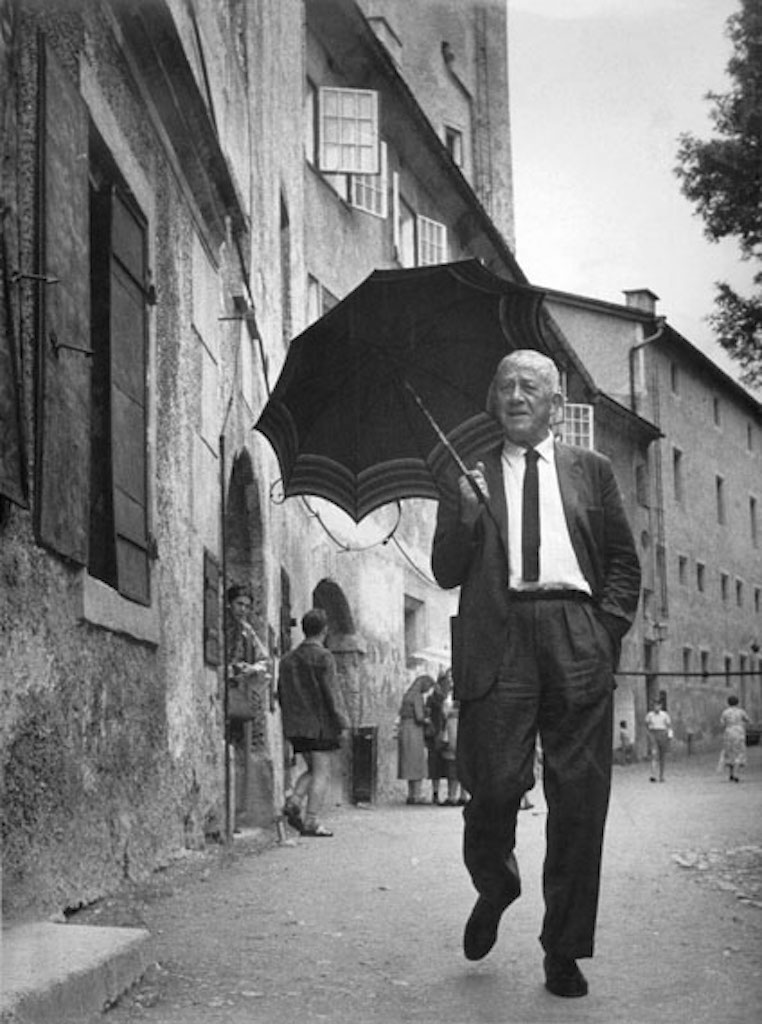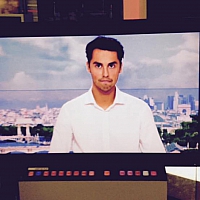
Gerti Deutsch: Oskar Kokoschka, Salzburg 1958, Gerti Deutsch © FOTOHOF archiv und gettyimages
Expositions du 29/9/2016 au 5/2/2017 Terminé
Das Verborgene Museum Schlüterstr. 70 10625 Berlin Allemagne
Press releaseDas Verborgene Museum Schlüterstr. 70 10625 Berlin Allemagne
"Destiny Emigration" reconstructs the stories of two Jewish photographers, Gerti Deutsch and Jeanne Mandello. Each left her country when the Nazis took power. Gerti Deutsch escaped Vienna for London in 1936, two years before Austria was annexed by the Germans. Jeanne Mandello had already fled Frankfurt in 1934, heading first for Paris and then for Montevideo in Uruguay.
Gerti Deutsch: Vienna 1908 – 1979 London
Born in 1908 and raised in the heart of Vienna, she trained as a photographer in 1933 – 1935 at the Graphische Lehr- und Versuchsanstalt in her native town. Austrofascism had already curtailed the liberal lifestyle and its propaganda proclaimed a visual aesthetic in photography that glorified the homeland. Gerti Deutsch, on the other hand, preferred everyday motifs that were at odds with this norm, such as her high-angle shot of people waiting at a provincial railway station (1930s), and the diagonals that were a hallmark of modern photography.
In 1936 she left Vienna for London, where her principal client until 1950 was the liberal, anti-fascist “Picture Post”, founded by Stefan Lorant in 1938. She produced 64 pictorial reports on cultural topics and current affairs, including photographic series on subjects like the Jewish refugee children brought over from Germany (1938) or Austrian POWs returning home from the war (1948). Having managed to salvage most of her work, she returned to Austria to take pictures after the Second World War, not only at the traditional Salzburg Festival but also of country people at rural festivals. In 1960, during a two-month trip to Japan, the photographs she produced for the Japanese Camera Industries Association depict fascinating motifs from a cultural landscape still largely unknown in Europe.
.jpg)
Gerti Deutsch: Aus dem Musterbuch, 1936 © FOTOHOF archiv and gettyimages
Jeanne Mandello: Frankfurt/Main 1907 – 2001 Barcelona
She had not yet turned 19 when she left home for Berlin in 1926 to train for two years at the Photographische Lehranstalt/Lette-Verein. She obtained her Chamber of Trade certificate with a mark of “very good”. Work experience with Dr Paul Wolff, the Leica pioneer, brought a practical initiation into photojournalism. In 1929 she opened her first studio in Frankfurt, acquired portrait commissions, took pictures for the press, and met the young Arno Grünebaum, who had taken an interest in photography. They married, but aware of the threat posed by Nazi attacks on Jewish institutions, they fled to Paris in January 1934. Here Mandello enjoyed a career she could scarcely have imagined as a fashion photographer, with commissions from companies like Balanciaga, Mainbocher, Maggy Rouff and Chanel, to name but a few.
Her career ended overnight when the Nazis invaded France. Like all German women, she was temporarily interned at the camp in Gurs after the National Socialists occupied Paris in 1940, after which she and her husband managed to escape via Spain and emigrate to Uruguay. Yet again she found the energy for a new beginning: she borrowed a Rolleiflex, and was soon successful with her portraits of artists and pictures for tourist guides. In 1953 Jeanne Mandello separated from Arno Grünebaum, settling in Barcelona in 1959.
The lives of both women photographers were coloured by their fate as refugees and emigrées, while Jeanne Mandello suffered the additional blow of losing almost all her work.
.jpg)
Jeanne Mandello: Ballerina 1, Montevideo 1946, Solarisation, Jeanne Mandello © Isabel Mandello de Bauer


